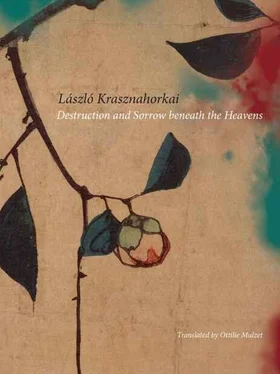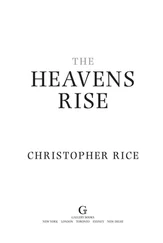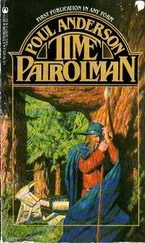[84] Louwailou pavilions (‘The Palace of Palaces’): A famous restaurant on Gushan island, known for its Hangzhou specialties.
[85] Wei Liangfu: A musician of Kunshan who lived in the sixteenth century and who, mixing earlier operatic modes, created the Chinese operatic genre known as kunqu.
[86] Mudan Ting (‘The Peony Arbour’; also known as ‘The Peony Pavilion’): Tang Xianzu’s most famous play about the power of love’s passion, it tells of a complicated amorous relationship in which love at first kills, then resurrects a young girl who may finally marry her lover.
[87] Tang Xianzu (1550–1617): The most famous Ming-era playwright.
[88] Chang Sheng Dian (‘The Palace of Eternal Life’): The most well-known theatrical piece of Hong Sheng, it immortalizes the famous but tragic love affair between the Tang-era emperor Xuanzong and his concubine.
[89] Hong Sheng (1645–1704): A significant Qing-era playwright and writer. Due to the supposedly immoral content of his play Chang Sheng Dian , he was expelled from the Imperial Academy and thus spent the greater part of his life in poverty near the Xihu in Hangzhou.
[90] Feng Zheng Wu (‘The Kite’s Mistake’): A romantic play by Li Yu in which the lovers write their thoughts as poems on kites and then let them touch each other in the sky.
[91] Li Yu (1611–80): An author well known for his novels, short stories, plays and critical works; he was also a theatre director.
[92] Shiwu Guan (‘Fifteen Strings of Coins’): A famous piece of kunqu theatre in which two innocents, sentenced to death for the savage murder and plundering of a butcher, are saved by a high-ranking and just official and the true murderer is seized instead.
[93] Zhou Enlai (1898–1976): A Communist politician, he was the prime minister of the People’s Republic of China from 1949 to 1976.
[94] Renmin Ribao (‘The People’s Daily’): The official paper of the Communist Party of China.
[95] jingju (the Peking opera): A form of traditional Chinese theatre which combines music, vocal performance, mime, dance and acrobatics. It arose in the late eighteenth century and became fully developed and recognized by the mid-nineteenth century. In contrast to kunqu, it has a relatively free form and grants the actor much more independence and scope for improvisation.
[96] gongchi: A traditional Chinese musical score in which vocal duration and tones are indicated next to the text in Chinese characters.
[97] Emperor Gaozong: The first ruler of the Southern Song dynasty ( r .1127–62), he was able to stop the invasion of the nomadic Jurchens from the north and thus establish his empire.
[98] Dashan (‘Great Mercy Pagoda’): A Song-era brick tower, 40 metres high. Earlier, it formed a part of a temple of the same name.
[99] Xu Wei (1521–93): A renowned Ming-era painter.
[100] Wang Xizhi (321–79): A great Chinese calligrapher, he was the first to develop the running script. His residence was the Orchid Pavilion which also served as a meeting place for the literati.
[101] Yue Kingdom: One of the many warring state formations in the first millennium bce.
[102] King Yu ( c .2200–2100 bce): Also known as Yu the Great. In Chinese mythology, the ‘Tamer of the Flood’, a saviour-hero and reputed founder of China’s oldest dynasty, the Xia.
[103] Yingtian pagoda: A seven-storey tower, 30 metres in height, built on the top of a hill in the centre of Shaoxing. Originally built during the Jin dynasty (265–420), it was rebuilt during the Song dynasty.
[104] Kuaiji mountain (‘The Discussion Mountain’): A peak near Shaoxing, it derives its name from the legend according to which King Yu, at this spot, discussed the water-regulation systems with his advisors.
[105] poetry competition: A meeting held in the residence of Wang Xizhi in 353, attended by 44 well-known literary figures.
[106] Tiantai mountain: A mountain range to the south of Ningbo, and a famous place of worship. One of the most important schools of Buddhism derived its name from this mountain.
[107] Guoqing Si: A monastery and the centre of the Tiantai school, founded over 1,500 years ago, at the foot of the Tiantai Mountain. Most of the extant buildings date from the eighteenth century.
[108] Zhiyi (538–98): A famous Buddhist monk and founder of the Tiantai school. He built his hermit’s abode here in 575; later, it became the centre of the school. According to his teachings, based upon the Lotus Sutra, the world is undifferentiated and yet all is transient, and the Buddha is present in every speck of dust.
[109] Hinayana (‘The Small Vehicle’): The earlier, more ‘orthodox’ version of Buddhism. Its doctrine of salvation is concerned only with the liberation of the individual.
[110] Mahayana (‘The Great Vehicle’): A version of Buddhism which emerged in the first century bce and which promises the universal salvation and liberation from suffering for all living beings. This form of Buddhism spread to China.
[111] Saicho (767–822): The renowned Japanese monk and founder of the Tendai school.
[112] Tendai: The Japanese school of Tiantai.
[113] Daban Niepan Jing (Mahaparinirvana Sutra; also known as the Nirvana Sutra): An important scripture of the Mahayana school. According to tradition, it conveys the sutra spoken by the Buddha immediately before he entered nirvana and thus contains his ‘most perfect’ teachings. This work describes nirvana — characterized by a state of eternal happiness — for the first time.
[114] Dazhidu Lun: Attributed to Nagarjuna ( c .150– c .250), this treatise of a hundred chapters concerning the theory and practice of Mahayana Buddhism was rendered into Chinese by the great translator Kumarajiva.
[115] Zhongguan Lun (Madhyamaka Sastra; also known as ‘A Treatise of The Middle Way’): Written by Nagarjuna, one of the most fundamental texts of the Madhyamaka school of thought which avows the emptiness of all phenomena.
[116] chan ding: ‘Contemplation and reflection’, that is, the practice of Buddhism.
[117] zhi hui: ‘Knowledge and wisdom’, that is, the theory of Buddhism.
[118] ding hui: ‘Concentration and wisdom’, that is, the conjoining of Buddhist theory and practice.
[119] wuji bajiao: The Five Periods and the Eight Teachings. Tiantai classified the Buddha’s teachings into five periods during which he delivered different teachings, aimed at different audiences with different levels of understanding; and eight teachings, consisting of the Four Doctrines and the Fourfold Methods.
[120] shoujie (‘made a vow’): An individual who takes part of the precepts. A kind of novice.
[121] biqui: A monk who has completed the final induction into the order.
[122] biquini: A Buddhist nun.
[123] Yulan fenghui: Something like a Buddhist ‘All Soul’s Day’ and falling on the fifteenth day of the seventh lunar month.
[124] Lunyu (The Analects [Conversations and Sayings]): The ancient work of Confucius, containing his brief aphorisms and teachings.
[125] Yijing (The Book of Changes, I Ching): An ancient Chinese work. Originally a divination book, it was later attributed with philosophical intent and ranked as one of the canonical works of Confucianism.
[126] Zhuangzi : An ancient Taoist philosopher as well as the book attributed to him. Much more voluminous than the Laozi , it is the most important summary of the philosophy of Taoism.
[127] Mengzi (Mencius, c .371–289 bce): An ancient philosopher in the tradition of Confucianism, one of whose most famous teachings is that humans are inherently endowed with a good nature.
Читать дальше












